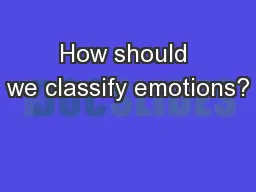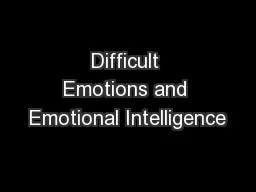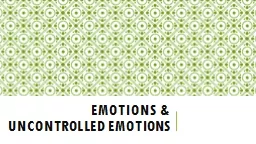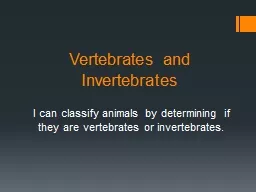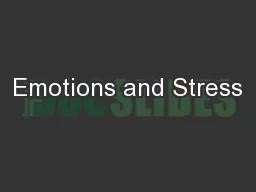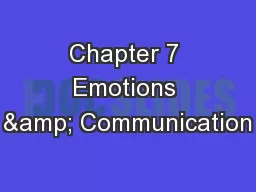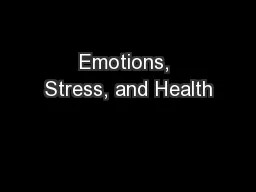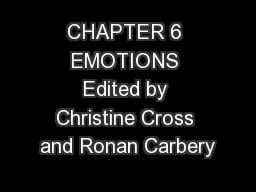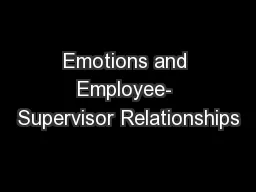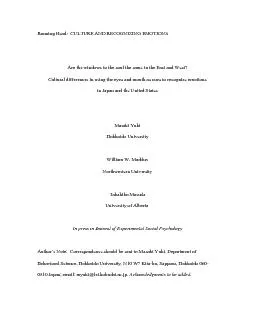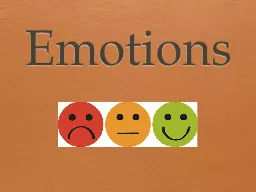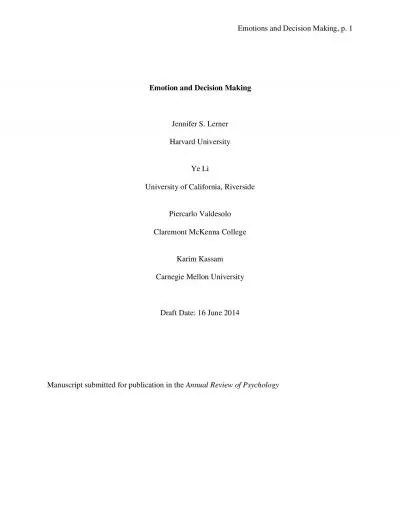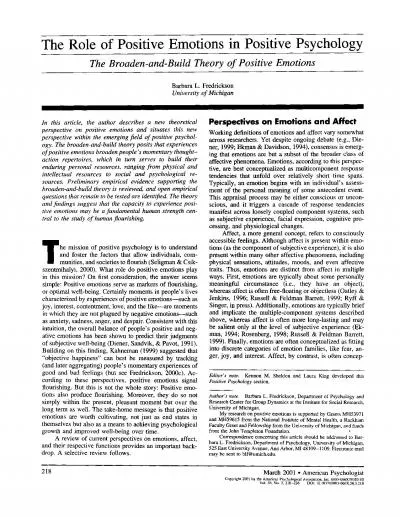PPT-How should we classify emotions?
Author : tatyana-admore | Published Date : 2015-12-04
4 Ways Basic Discrete Emotions Model Emotions are universally distinct categories Component Process Theory combination of simple cognitive appraisals Dimensional
Presentation Embed Code
Download Presentation
Download Presentation The PPT/PDF document "How should we classify emotions?" is the property of its rightful owner. Permission is granted to download and print the materials on this website for personal, non-commercial use only, and to display it on your personal computer provided you do not modify the materials and that you retain all copyright notices contained in the materials. By downloading content from our website, you accept the terms of this agreement.
How should we classify emotions?: Transcript
Download Rules Of Document
"How should we classify emotions?"The content belongs to its owner. You may download and print it for personal use, without modification, and keep all copyright notices. By downloading, you agree to these terms.
Related Documents

